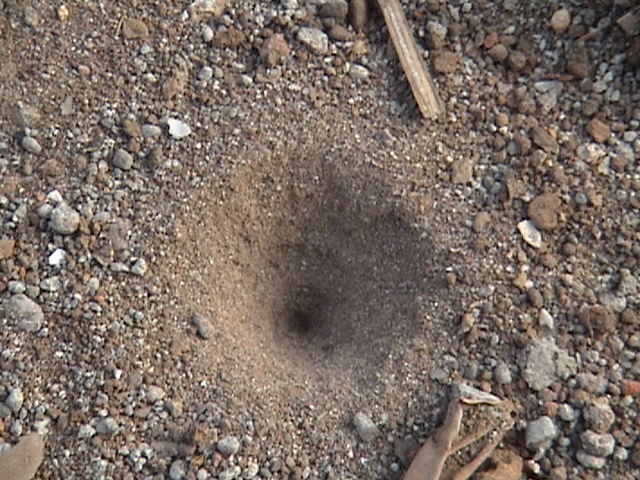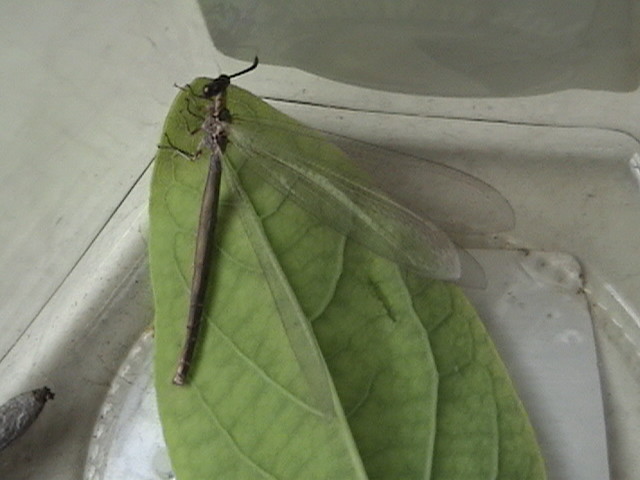Adaptation
The Antlion is named for their predation on ants. The adults are
long delicate creatures, which is distinctly different form the
stubby, ferocious-looking larvae stage that morphed from. The
Antlion have shot knobbed or clubbed antennae and long membranous
wings. Each pair of wings is similar in shape, and display, which is
mostly spots. The adult Myrmeleon immaculatus is a very
slow flyer which is why it flies so infrequently and is mostly
nocturnal. However, the legs contain elongated claws, stiff
bristles, and spines to help them capture prey while in flight.(Hutchins
2004)
The larvae of the Myrmeleon immaculatus has adapted extremely well to survive, which is why for most of the Antlion's life they are larvae. The larvae which are usually called "doddlebugs", because of the lines they leave in the sand, have an oval, plump abdomen with a skinny thorax and head with large mandibles. When the larvae build their pits to capture prey they begin by walking backwards and using there head and large mandibles as a digging tool to toss away sand. These pits have been recorded to increase in size as the Myrmeleon immaculatus grows in size. (Swan and Papp 1972)
